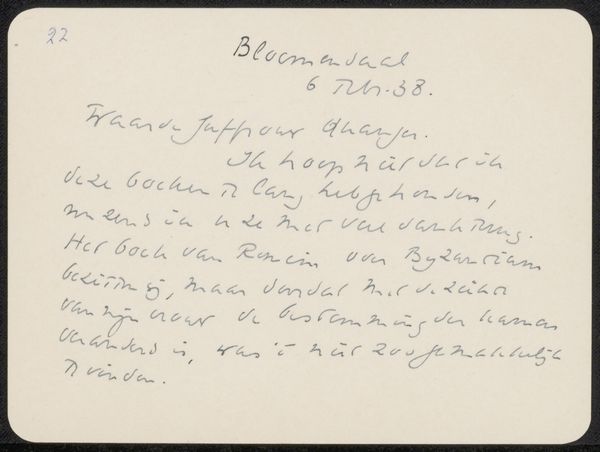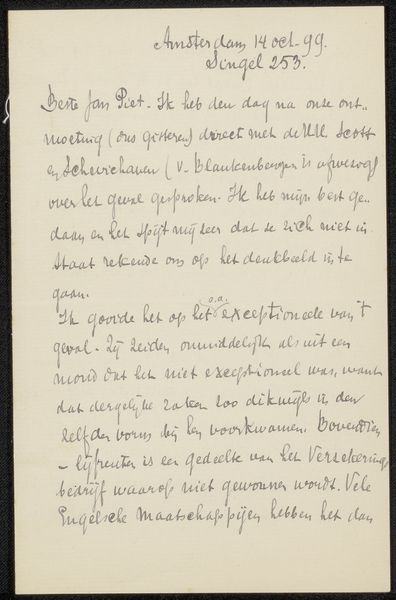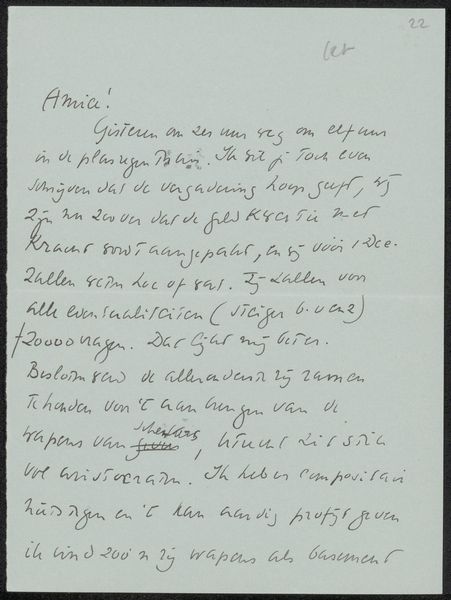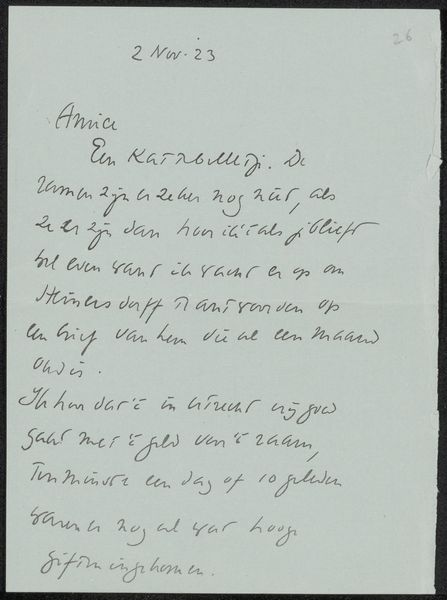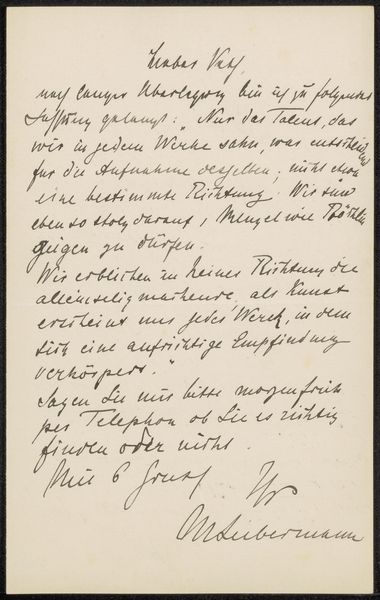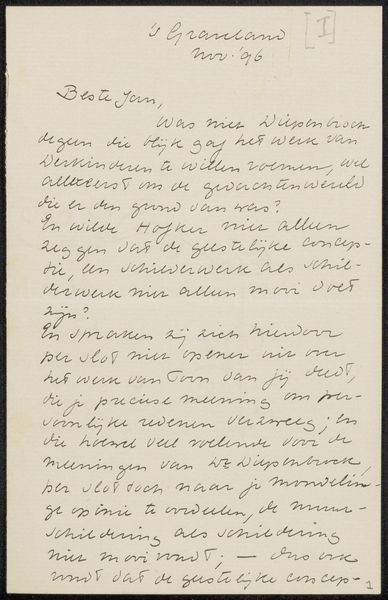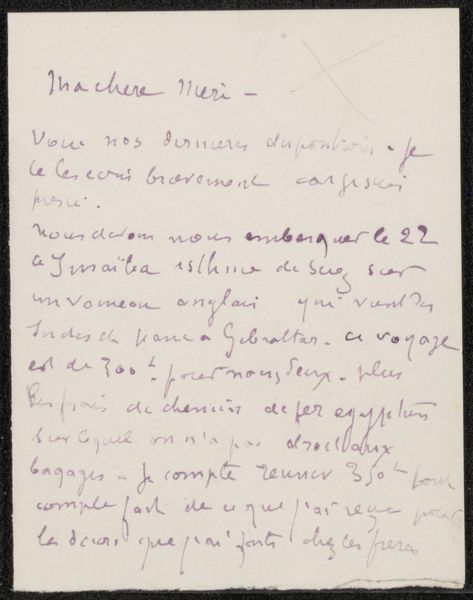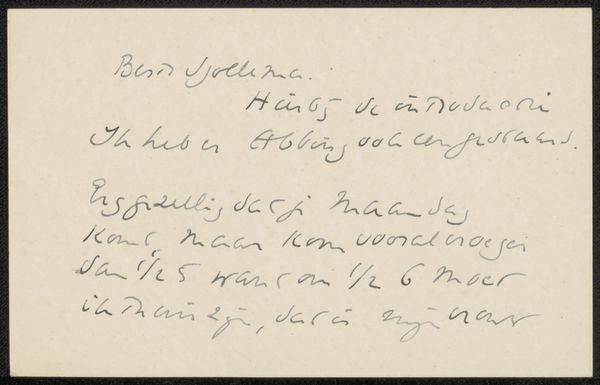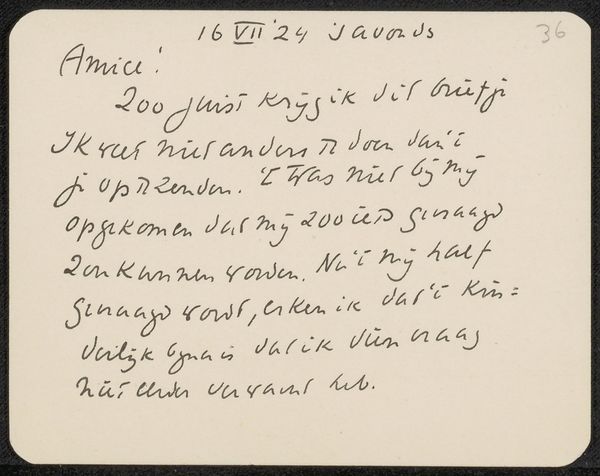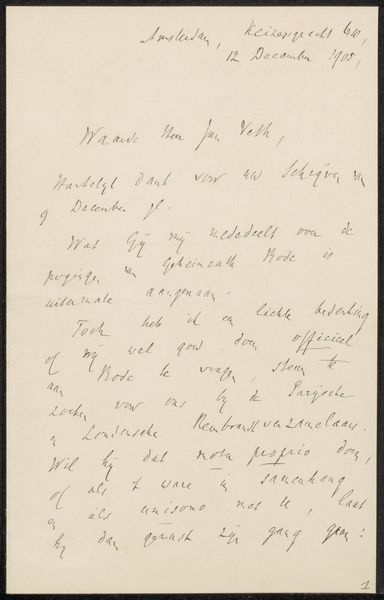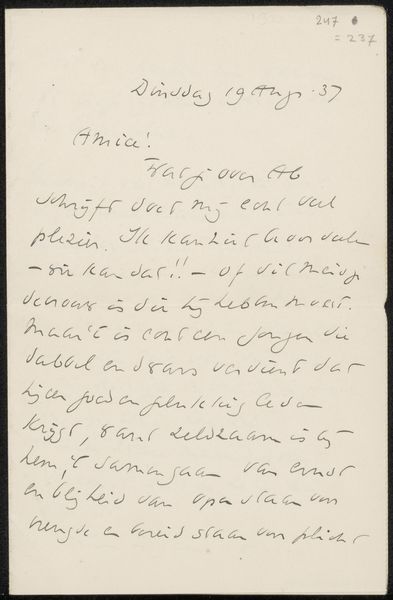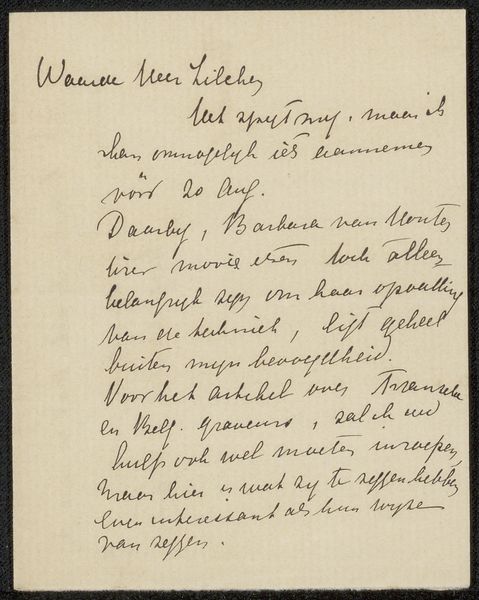
drawing, paper, ink
#
drawing
#
script typography
#
hand-lettering
#
thick colouring
#
old engraving style
#
hand drawn type
#
hand lettering
#
paper
#
ink
#
hand-drawn typeface
#
thick font
#
handwritten font
#
coloring book page
Copyright: Rijks Museum: Open Domain
Editor: Here we have "Brief aan Willem Bogtman," a drawing in ink on paper, possibly from 1924 to 1926 by Richard Nicolaüs Roland Holst. The script is just beautiful, almost like an engraving. It’s intriguing. What strikes you when you look at this letter? Curator: The context is crucial here. Roland Holst was a prominent figure in the Dutch Symbolist movement and deeply engaged in socialist politics. This letter, seemingly a personal correspondence, offers a glimpse into the intellectual circles and artistic networks of the time. Consider the role of personal letters in pre-digital communication: they served not just as intimate exchanges but also as vehicles for intellectual debate and artistic collaboration. Editor: So, it's more than just a casual note? Curator: Precisely. The act of handwriting itself becomes significant. Roland Holst, steeped in craft traditions, elevates the everyday act of writing to an art form. He’s consciously designing the text, wouldn't you agree? Notice the deliberate, almost calligraphic quality. This reflects the broader Arts and Crafts movement influence where there’s an impulse to integrate art into all aspects of life, pushing against industrial modes of production. It challenges the impersonal nature of the printed word, and the mass media which started dominating art at that period. Editor: I see, so it's almost a political statement within a personal message? Curator: Exactly. It subtly underscores his commitment to a particular set of values. The content itself – perhaps inconsequential on the surface – gains deeper meaning when viewed through the lens of social and artistic currents. It prompts us to consider the relationship between art, labor, and social engagement during that time. How the artist acts as someone with public role and is actively involved in the socio-political sphere of a place and period. Editor: That's fascinating; I'll definitely look at letters differently from now on. Thanks! Curator: And I am more attuned to the relationship of public role of art and social agency within imagery; always an enlightening experience.
Comments
No comments
Be the first to comment and join the conversation on the ultimate creative platform.
